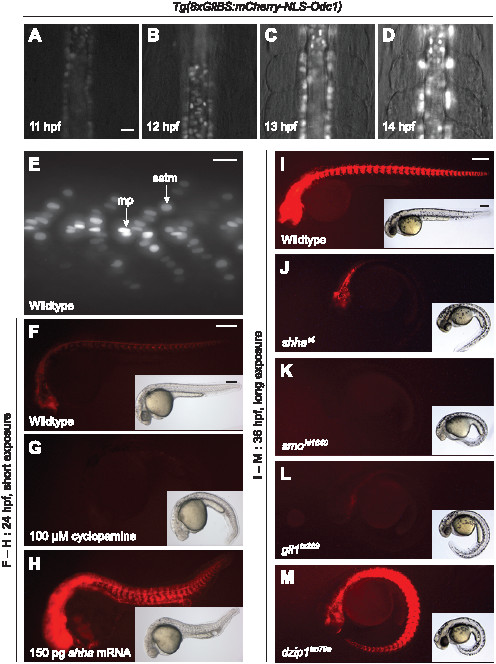Fig. 3
Tg(8xGliBS:mCherry-NLS-Odc1) zebrafish report Hh pathway activity with high sensitivity and fidelity.
(A?D) Videomicroscopy frames of a Tg(8xGliBS:mCherry-NLS-Odc1) embryo during early somitogenesis. (E) Somitic region of a Tg(8xGliBS:mCherry-NLS-Odc1) zebrafish at 24 hpf, revealing cellular differences in nuclear mCherry fluorescence. Muscle pioneer cells (mp) and superficial slow-twitch muscle fibers (sstm) are labeled. (F?H) Tg(8xGliBS:mCherry-NLS-Odc1) zebrafish treated with cyclopamine or shha mRNA at the one-cell stage. Fluorescence and brightfield images of representative 24-hpf embryos are shown. (I?M) Tg(8xGliBS:mCherry-NLS-Odc1) zebrafish in wildtype or the indicated mutant backgrounds. Fluorescence and brightfield images of representative 36-hpf embryos are shown. The fluorescence micrographs were acquired with longer exposure times than those in panels F?H to enable the detection of low-level reporter activity. Brightfield micrographs show the distinctive you-type phenotypes observed within the same clutch of embryos. Embryo orientations: A?D, dorsal view and anterior up; E?M, lateral view and anterior left. Scale bars: A?E, 20 μm; F?M, 200 μm.

